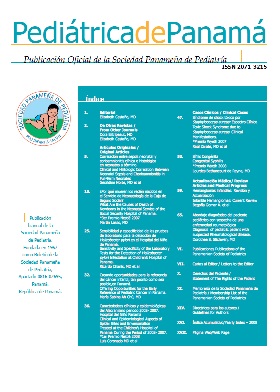About Other Journals- Pediatric snakebite poisoning: the world's "most neglected neglected tropical disease?"
Authors
DOI:
https://doi.org/10.37980/im.journal.rspp.20201758Keywords:
epidemiology, toxicologyAbstract
The article calls for attention to the importance of snakebites as a burden of disease in rural communities. Fortunately, the WHO has reinstated snakebites as part of the list of neglected tropical diseases and has launched a global strategy for the prevention and control of snakebite envenomation.
This article is the first of two papers that describe the epidemiology, socioeconomic impact, and key prevention strategies. It also explores current challenges and priorities, including the production and distribution of safe and effective antidotes.
The article begins with the question: Which snakes are the most dangerous? And it is described that there are more than 2,500 species of snakes classified in the colubroidea superfamily. Snakes belonging to the families Viperidae (for example, true vipers and pit vipers) and Elapidae (subfamily Elapinae) (for example, cobras, mambas, kraits) are those that exert the highest number of poisonings. The most relevant species vary depending on the region.
Most snakebites occur on the feet and hands, as people often work barefoot and with their hands. Changes produced by deforestation and mining activities have contributed to bringing populations closer to the snake area, as well as climate change, natural disasters and floods.
Since 2019, the WHO launched a strategy for the Prevention and Control of Snake Bites, in which four priority areas of work were established aimed at: 1) empowering and involving communities, 2) guaranteeing safe treatments and effective, 3) strengthen health systems and 4) increase partnerships, coordination and resources. Under this strategy, the goal is to reduce the mortality and disability caused by snakebite poisoning by 50% by 2030.
Definitely the burden of snakebite disease is considerable, especially in rural communities. It is mentioned that in most cases these accidents are faced with health systems with poor infrastructure for their care. However, with the recent reincorporation to the WHO list of noncommunicable diseases, the approval of the 2018 resolution by the World Health Assembly and the publication of a global strategic plan by the WHO, it is finally possible to see that, after many decades of neglect, the snakebite is starting to get the attention it deserves.
Downloads
Published
Issue
Section
License
Copyright (c) 2021 Pediatric Journal of PanamaDerechos autoriales y de reproducibilidad. La Revista Pediátrica de Panamá es un ente académico, sin fines de lucro, que forma parte de la Sociedad Panameña de Pediatría. Sus publicaciones son de tipo gratuito, para uso individual y académico. El autor, al publicar en la Revista otorga sus derechos permanente para que su contenido sea editado por la Sociedad y distribuido Infomedic International bajo la Licencia de uso de distribución. Las polítcas de distribución dependerán del tipo de envío seleccionado por el autor.






